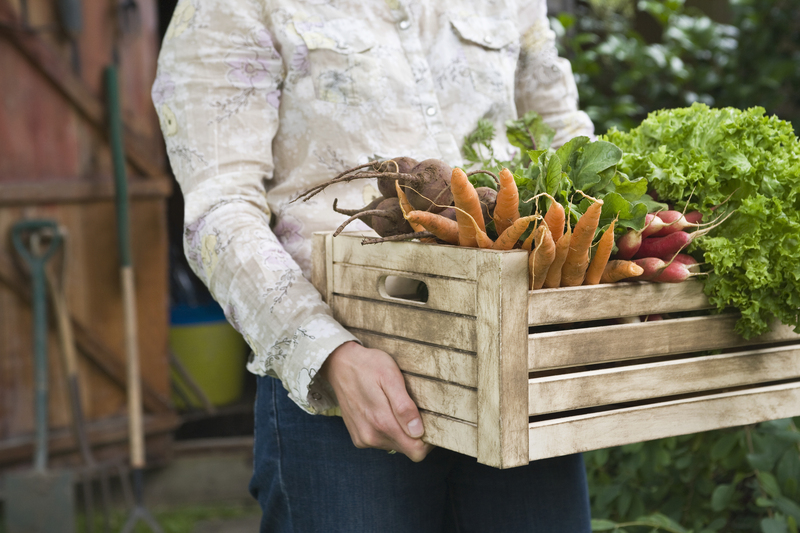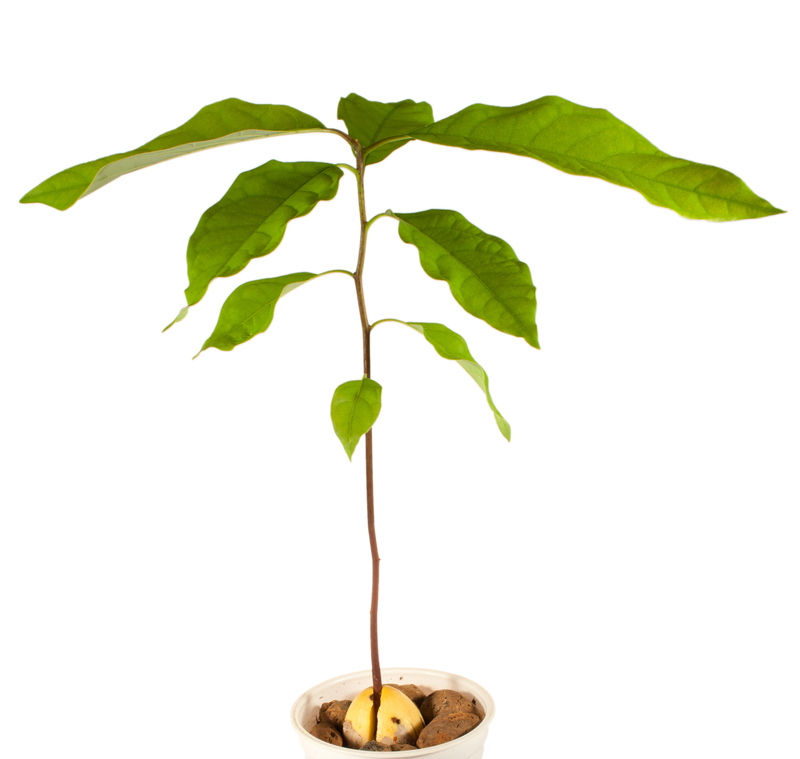Organic Waste's Journey to Nutritive Soil
Posted on 10/06/2025
Organic Waste's Journey to Nutritive Soil: From Kitchen Scraps to Garden Gold
Organic waste is often seen as mere garbage--fruit peels, coffee grounds, egg shells, or lawn trimmings. Yet, what if these so-called discards could transform into a resource of immense value? This is precisely the story of how organic waste embarks on a fascinating journey, culminating in the creation of rich, nutritive soil that sustains thriving gardens, farms, and ecosystems.
In this comprehensive guide, we will delve into the transformative journey of organic waste. We'll explore key processes such as composting, the science behind decomposition, the ecological and agricultural benefits, and practical tips for turning your own bio-waste into organic gold. Let's discover how this cycle supports sustainability and food production.

The Nature and Types of Organic Waste
What Is Organic Waste?
Organic waste refers to degradable materials derived from living organisms, including plants and animals. This can encompass a diverse array of substances, such as:
- Kitchen scraps (vegetable and fruit peels, coffee grounds, egg shells, stale bread, etc.)
- Yard and garden waste (grass clippings, leaves, twigs, plant cuttings)
- Manure and agricultural waste
- Paper and cardboard (if non-inked and uncoated)
These materials are biodegradable -- they can break down through natural processes, returning their nutrients to the earth in the form of enriched organic matter.
Why Divert Organic Matter from Landfills?
When organic waste is tossed into landfills, it decomposes anaerobically (without oxygen), leading to the release of methane--a greenhouse gas 25 times more potent than CO2. However, if managed properly through controlled composting and recycling, this waste becomes a valuable resource for building fertile soil. Sustainable management of organic waste is a key pillar in the fight against climate change and environmental degradation.
The Science of Decomposition: Turning Waste to Soil
The Four Key Stages of Decomposition
- Fragmentation: Macro-organisms like earthworms, insects, and other detritivores break down large bits of organic matter into smaller pieces.
- Initial Decay: Bacteria and fungi begin to decompose more accessible compounds like simple sugars and starches.
- Active Decomposition: Microbes ramp up activity, breaking down complex molecules such as cellulose and lignin under elevated temperatures.
- Maturation: The compost matures into humus--a stable, dark, crumbly substance rich in plant nutrients.
Throughout these stages, the organic material is transformed by a bustling community of microorganisms--including bacteria, fungi, actinomycetes--as well as macro-organisms such as worms and beetles. Each plays a specific role, ensuring that nutrients are recycled efficiently.
The Role of Microorganisms in Soil Creation
Microbial action is the heartbeat of the organic waste's conversion into nutritive soil. Microbes break down complex organic compounds and release nutrients such as nitrogen, phosphorus, potassium, calcium, and magnesium. These nutrients enrich the soil, supporting robust plant growth and greater biodiversity.
The Magic of Composting: An Engineered Journey
What Is Composting?
Composting is a structured, natural process that speeds up organic matter's decomposition by creating optimal conditions for aerobic microbes. It's a controlled version of nature's recycling system, allowing us to process kitchen and yard waste into dark, friable, earth-smelling compost that is exceedingly beneficial for soil health.
Different Methods of Composting
- Backyard Composting: Using piles or bins to process household and garden waste.
- Vermicomposting: Harnessing worms, especially red wigglers, to convert organic materials into high-nutrient "vermicast."
- Bokashi: An anaerobic fermentation process using beneficial microbes to "pickle" waste, suitable for small or urban settings.
- Industrial/Commercial Composting: High-volume facilities processing municipal green waste rapidly at optimal conditions.
How to Compost Effectively
- Choose the Right Site: Place your compost heap in a well-drained, partially shaded area.
- Balance Green & Brown Materials: Combine nitrogen-rich ("greens" like food scraps, grass) and carbon-rich ("browns" like leaves, straw, cardboard) for optimal microbial activity.
- Maintain Aeration & Moisture: Turn the pile regularly to provide oxygen, and keep it moist (like a wrung-out sponge).
- Monitor Temperature & Decomposition: Compost should heat up as microbes work. When the temperature drops and the material becomes dark and crumbly, the compost is mature.
Compost not only recycles organic waste but unlocks a powerful resource: organic soil amendment that improves structure, fertility, and biological activity.
The Agricultural and Environmental Impact of Compost-Enriched Soil
Benefits of Nutritive Soil for Agriculture
- Enhanced Soil Fertility: Compost delivers a balanced blend of macro and micronutrients, promoting healthier crops and higher yields.
- Improved Soil Structure: Humus increases soil porosity, aeration, and water retention--reducing erosion and runoff.
- Disease Suppression: A diverse soil microbiome inhibits plant pathogens, leading to lower reliance on chemical pesticides.
- Boosts Biodiversity: Fertile soils nurture beneficial insects, earthworms, fungi, and bacteria, supporting a productive ecosystem.
- Reduced Need for Chemical Fertilizers: By closing nutrient cycles, composting diminishes the demand for synthetic fertilizer--which can leach into waterways and cause pollution.
Environmental Advantages: Closing the Nutrient Loop
When organic waste is returned to the soil, we not only reduce landfill waste and greenhouse gases, but ensure that vital nutrients are cycled back into agriculture and landscaping. This approach:
- Minimizes landfill space usage
- Reduces methane emissions
- Builds resilience against drought (thanks to improved soil water retention)
- Restores degraded soils and supports reforestation and urban greening initiatives
The Role of Humans: Participating in the Cycle of Regeneration
How to Start Composting at Home
- Set Up Your Compost System: Choose a bin, heap, or tumbler suitable for your available space and waste volume.
- Educate Your Household: Get everyone on board with separating organics from landfill waste.
- Input the Right Materials: Compostable waste includes fruit and vegetable peels, coffee grounds, tea bags (without plastic), eggshells, grass clippings, leaves, cardboard, and paper towels (not with chemicals or grease).
- Avoid Contaminants: Do not compost meat, dairy, fats, or heavily treated paper and plastics.
- Monitor and Maintain: Turn your pile, watch for odors (which signal imbalance), and adjust the input ratio of greens and browns as needed.
Once your compost is ready, apply it generously to garden beds, lawns, or even houseplant pots. You will soon witness the explosive growth and resilience that organic soil bestows.
Community and Commercial Composting Programs
Not everyone has space or the means to compost at home. Many communities now offer curbside organic waste collection and local composting services. Participating in such initiatives ensures that organic matter is responsibly processed, with the resulting compost used on local farms, parks, or sold to gardeners. Check your municipality's options to become part of the soil-building revolution!
Innovations in Organic Waste Management
Biochar, Digesters, and Upcycling
Newer technologies are extending the journey of organic waste beyond traditional composting. Bio-digesters convert organic residues into biogas for renewable energy while leaving behind nutrient-rich digestate usable as a soil amendment. Biochar--charred organic matter--improves soil carbon storage and fertility. Even mushroom cultivation businesses are converting food industry waste streams into gourmet mycelium products and post-harvest soil conditioners.
Innovation ensures more of our "waste" returns as nourishment to the earth, closing loops and boosting sustainability.
Frequently Asked Questions: Organic Waste's Path to Nutrient-Rich Soil
How long does composting take?
The time for organic material to become finished compost varies--anywhere from 2 months in hot, actively managed systems to 6-12 months in cooler, less-attended heaps.
What can't I compost?
It's best to avoid composting meat, dairy, oils, pet waste, and chemically-treated plant material. These can attract pests or introduce harmful pathogens and contaminants.
How does compost improve soil and plant health?
By increasing nutrient content, improving physical structure, boosting microbial diversity, and elevating water retention, composted organic matter turns depleted dirt into thriving, nutritive soil ideal for plant growth.
Is composting climate friendly?
Composting slashes methane emissions from landfills, strengthens the natural carbon cycle, and boosts carbon sequestration in soils, making it a strong tool for sustainability and climate action.

Conclusion: The Empowering Cycle of Organic Waste to Soil
The journey of organic waste to nutritive soil is one of regeneration, stewardship, and possibility. What begins as everyday scraps--often dismissed as useless--undergoes a remarkable transformation through decomposition, microbial action, and human ingenuity. The result is living, thriving soil that feeds plants, supports wildlife, stores carbon, and sustains the cycle of life.
Each of us can participate in this cycle of renewal--whether by composting at home, supporting community composting programs, or advocating for better waste management. Not only does this build a greener planet, but it literally nourishes the ground beneath our feet. Embrace the journey, and watch your waste become the source of tomorrow's abundance.

